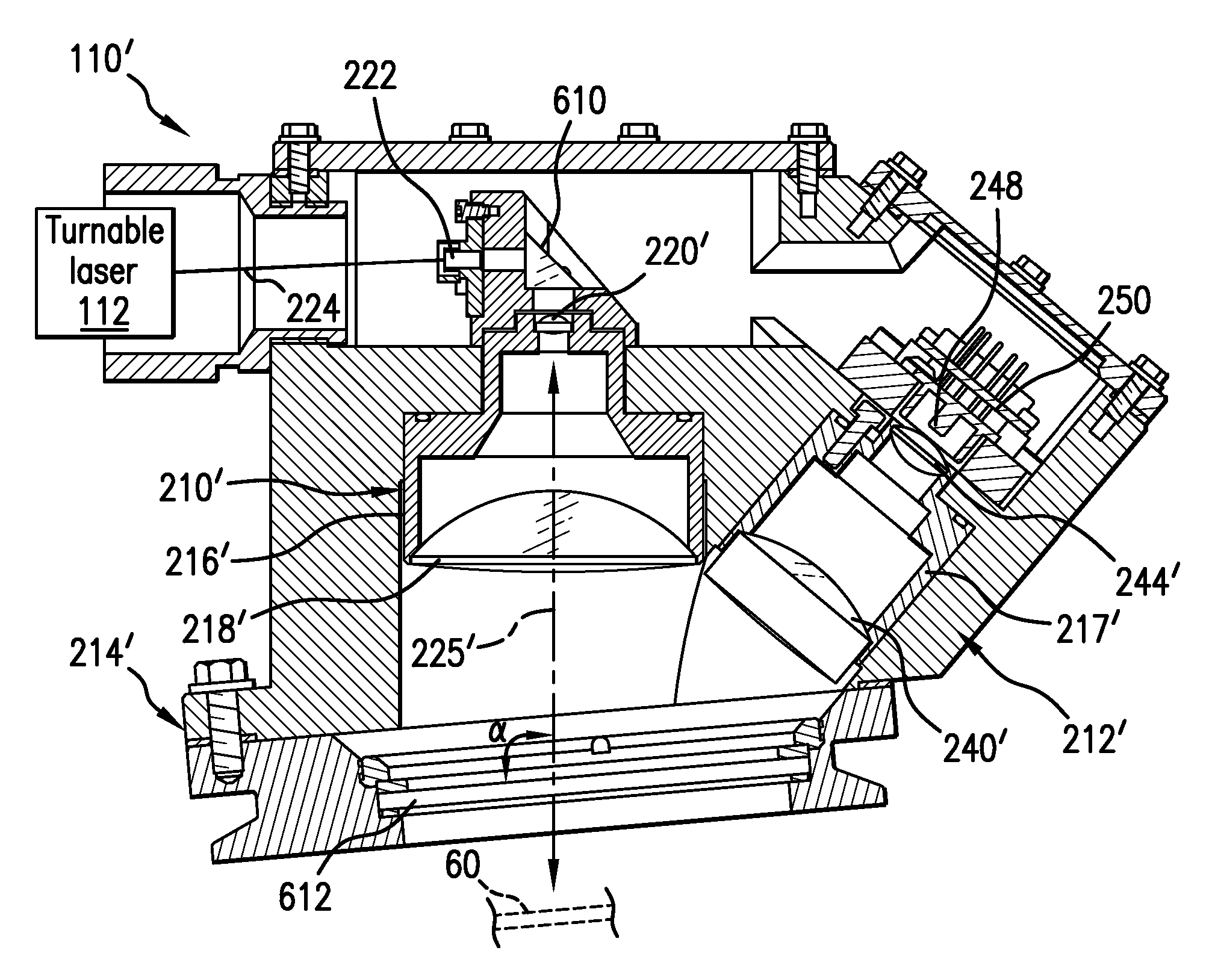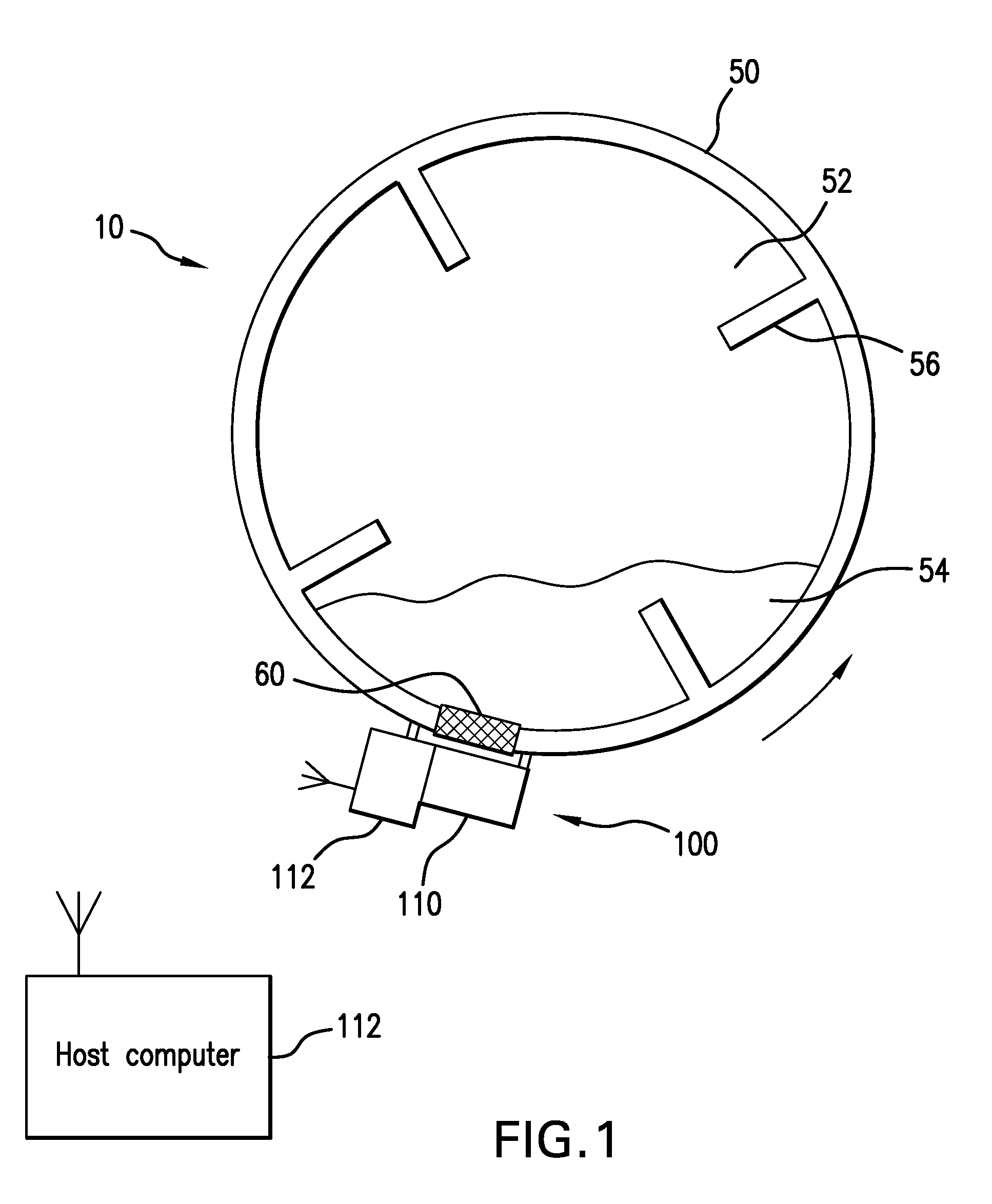Spectroscopy Probe and System for Material Processing Systems
a material processing system and spectroscopy probe technology, applied in the field of near infrared (nir) spectroscopy, to achieve the effect of reducing spectral nois
- Summary
- Abstract
- Description
- Claims
- Application Information
AI Technical Summary
Benefits of technology
Problems solved by technology
Method used
Image
Examples
first embodiment
[0030]FIG. 2A is a perspective view of the probe 110. It comprises a projection lens system unit 210 that projects the tunable signal from a laser through the sapphire window 60 to the process material 54. A collection lens system 212 is used to collect the diffusely reflected light from the material 54 and focus it onto a detector. The projection lens system 210 and the collection lens system 212 are located within a housing 214, which is usually bolted or otherwise secured to the drum 50 of the processing system 10.
[0031]FIG. 2B shows the top of the probe 110 with the projection lens system 210, the collection lens system 212, and housing 214.
[0032]FIG. 2C is a cross-sectional scale view of the probe 110 taken along line A-A in FIG. 2B. The projection unit 210 comprises a cylindrical frame 216. This holds an outer convex lens 218 and an inner concave lens 220. An optical input fiber 224 carries the tunable optical signal from the tunable laser 112. These lenses 218, 220 work toge...
second embodiment
[0044]FIG. 6A is a perspective view of the probe 110′. It similarly comprises a projection lens system that projects the tunable signal from a laser and collection lens system. In this view, they are hidden by the housing 214′, which provides an air sealed arrangement so that the optical assembly can be filled with an inert gas to control spectral noise from water vapor, for example.
[0045]FIG. 6B is a cross-sectional scale view of the probe 110′. The projection unit 210′ of the second embodiment comprises a cylindrical frame 216′ held in housing 214′. This holds outer convex lens 218′ and an inner convex lens 220′. An optical input fiber 224 carries the tunable optical signal from the tunable laser 112 to the output fiber facet in the connector assembly 222. These lenses 218′, 220′ work together to form a collimated beam of the tunable optical signal emitted from a fiber endface / connector assembly 222.
[0046] In the second embodiment 110′, a reflecting prism 610 is used as a fold mi...
PUM
 Login to View More
Login to View More Abstract
Description
Claims
Application Information
 Login to View More
Login to View More - R&D
- Intellectual Property
- Life Sciences
- Materials
- Tech Scout
- Unparalleled Data Quality
- Higher Quality Content
- 60% Fewer Hallucinations
Browse by: Latest US Patents, China's latest patents, Technical Efficacy Thesaurus, Application Domain, Technology Topic, Popular Technical Reports.
© 2025 PatSnap. All rights reserved.Legal|Privacy policy|Modern Slavery Act Transparency Statement|Sitemap|About US| Contact US: help@patsnap.com



